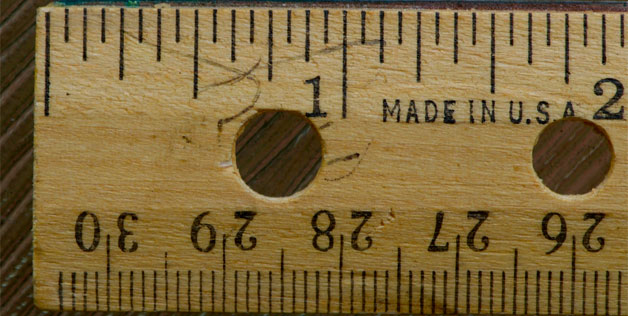Position Your Reed Right, Play Better

Just about any saxophone teacher, book, or website will tell you that when fastening your reed to the mouthpiece, the best way to do it is to position the tip of the reed so that it’s lined up as perfectly as possible with the tip of the mouthpiece. But sometimes it’s best to try some different things to get you playing the way you want to play.
Over the Top
If you’re looking for a crisp, poppin’, and edgy sound as well as highly percussive articulation, keeping that reed just a hair up above the tip of the mouthpiece will get you there. Doing this will move your pitch up a bit as well.
This reed position will also force you to blow harder, since you’re making the reed harder to play – almost like making your reed instantly go up half a number in strength. The mighty Sonny Rollins actually positions his reed this way.
Down Under
The downside of having the tip of your reed go out past the top is that pulling off fast articulation will be a bit more challenging. If you plan on doing all sorts of quick n’tricky articulation, you might want to move the reed to just a tiny bit below the tip of the mouthpiece. This way, the softest part of the reed is what’s making the seal between itself and the mouthpiece and your tongue doesn’t really have any heavy lifting to do in order to articulate. Saxophone lightening bolts like Johnny Griffin would couple this approach with a super-soft reed to keep those notes a’flyin.
The Happy Medium
Of course, the reason that most sax players choose to line the reed up with the top of the mouthpiece is because it gives them the both of both worlds: edgy sound and bangin’ articulation combined with the right amount of nimbleness. However, great art often means straying from the happy medium and choosing a more radical approach. Your sax sound is as personal as your speaking voice and there’s no rules when it comes to finding your own personal expression.
So go ahead, don’t be shy – try moving that reed around and see what happens!






February 9, 2021 @ 10:55 am
Sorry but my experience has been – slightly above the mouthpiece tip gives you a little less brightness or edge to the tone. Slightly down from the tip gives you a little brighter sound.
How To Avoid Sagging In Your Clarinet Playing – ScionAv
October 17, 2022 @ 4:36 am
[…] important to develop a strong embouchure and to practice regularly. It is also important to use the proper reed, mouthpiece, and ligature for your instrument. Here are a few additional tips: 1. Be sure to warm […]
The Sound Of The Clarinet: Why It Might Be Strained And How To Fix It – ScionAv
November 2, 2022 @ 1:54 am
[…] are a few things you can do to make your clarinet sound better. First, make sure you are using the proper reed for your instrument. If you are using a synthetic reed, try soaking it in warm water for a few […]